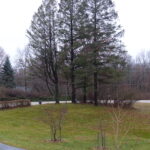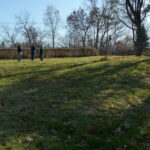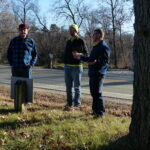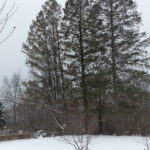When we moved into our home ten years ago, we ended up with more than a house. The former owner had regularly mowed most of our two acres. Within the next two years, we shrank the lawn by about half. A steep former lawn north of the house is now prairie and a fairly level quarter acre between our house and the road is Marion’s labyrinth that she created within a prairie we planted.
Today, most people call flower-studded prairies “pollinator patches” and interest is strong in transforming lawns into them. Here are just a few of the good reasons:
Why Plant Pollinator Patches?
- Color: Lawns are a monoculture of green. Pollinator patches feature three seasons worth of changing vibrant color as many species of wildflowers come into and go out of bloom. They are beautiful.
- Water: Closely mowed lawns don’t absorb rain well. Much of a storm’s water runs off, worsening flooding. In contrast, deep-rooted prairies channel most of a storm’s water into the soil, where it eventually recharges the water table and doesn’t worsen downstream flooding.
- Labor: We don’t enjoy endless hours walking behind a lawnmower. We will mow our newly planted prairie two or three times this summer and in the following years, we won’t mow it at all. The lawn takes about a dozen mows a year. So, we’re saving time and mower gas that costs money and creates carbon dioxide.
- Wildlife: We love watching our wren pairs forage for insects in our pollinator patches. By expanding our prairie we’ll welcome even more beautiful and interesting beneficial wild animals to our yard.
Partnerships Work!
Our new prairie will be close to busy 30th St. Drive, so motorists cruising by will see the land transform. We’re partnering the project with the Monarch Research Project, Linn County Roadsides, Sustainable Landscape Solutions, and Pheasants Forever.
Many people want to create pollinator patches in their yards but don’t know how to do this. We will be blogging through the process to help folks know how this is done. Stay tuned and keep visiting www.windingpathways.com to learn how.
- The heavy, up-slope clay soil will absorb water more efficiently and reduce runoff.
- The crew from Sustainable Landscape Solutions determine soil type
- Winding Pathways, Linn County roadsides, Pheasants Forever, the Monarch Research Project and Pheasant Forever make a strong partnersjhip demonstrating how to improve the quality of the land.
- This year snow covers the lawn.






Enjoy! There is nothing quite as awesome as seeing the birds and various butterflies enjoy wildflower patches. I can imagine the joy you all will experience with your prairie patches. Sadly many of our beautiful wildflowers here in Virginia like milkweed are destroyed by farm machinery and cutting along the roads by the VDT. Too bad!
Blessings, Jac
Hey y’all – looking forward to the how tos! have a fun spring! hope all is well! love y’all, Paula
We are working on this especially in this unusual time. Going to the positive!